| Motion |
Patient Position |
Start Position |
End Position |
| MCP Flexion |
The patient is
sitting or supine with forearm in supination. The wrist is in neutral with
the MCP joints fully extended. The therapist stabilizes the metacarpals
just proximal to the MCP joint, and applies resistance on the palmer
surface of the proximal row of phalanges in the direction of MCP extension
while the patient flexes at the MCP joint. |
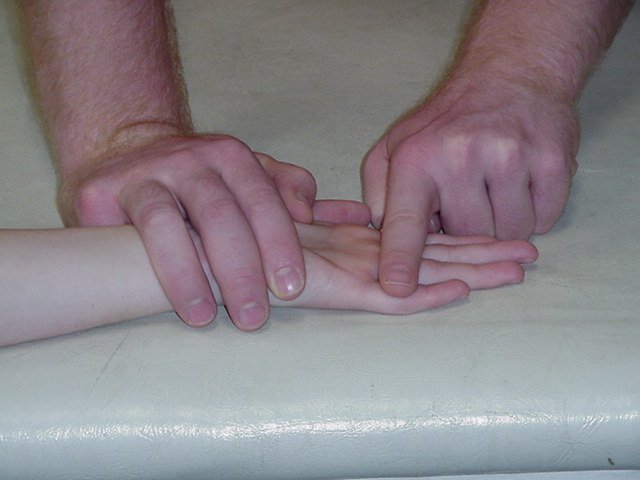 |
 |
| MCP Extension |
The patient's
forearm is in pronation with the wrist in neutral. MP joints and IP joints
are in relaxed flexion posture. Therapist stabilizes the wrist and places
the index finger of the resistance hand across the dorsum of all proximal
phalanges just distal to the MCP joints. Give resistance in the direction
of flexion. |
 |
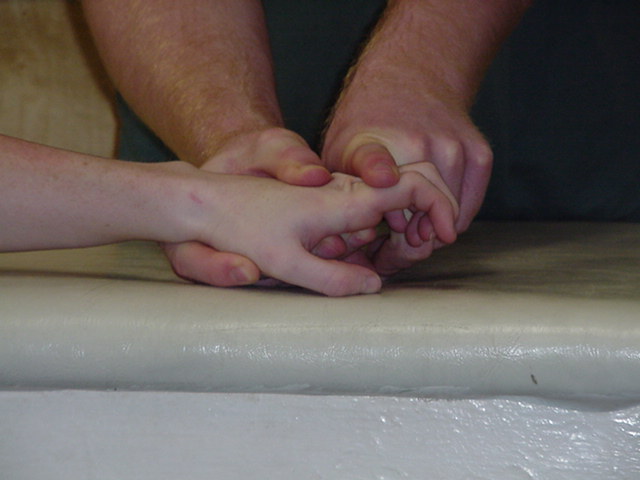 |
| PIP Flexion |
The patient's
forearm is in supination with the wrist in neutral. The finger to be
tested is in slight flexion at the MCP joint. The therapist holds all
fingers, except the test finger, in extension at all joints. The therapist
applies resistance at the head of the middle phalanx in the direction of
extension while the patient actively flexes the PIP joint. |
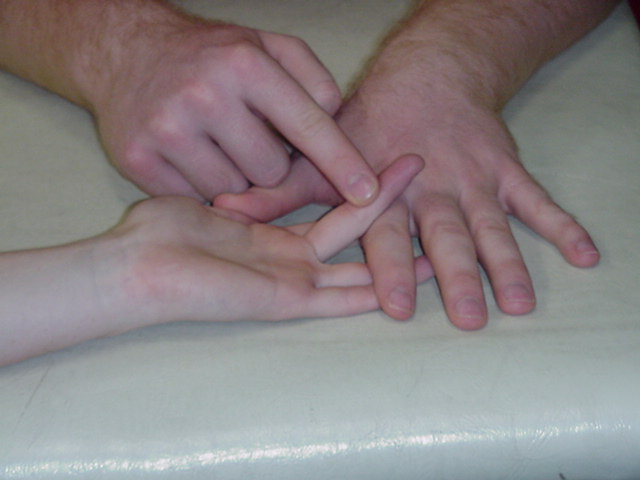 |
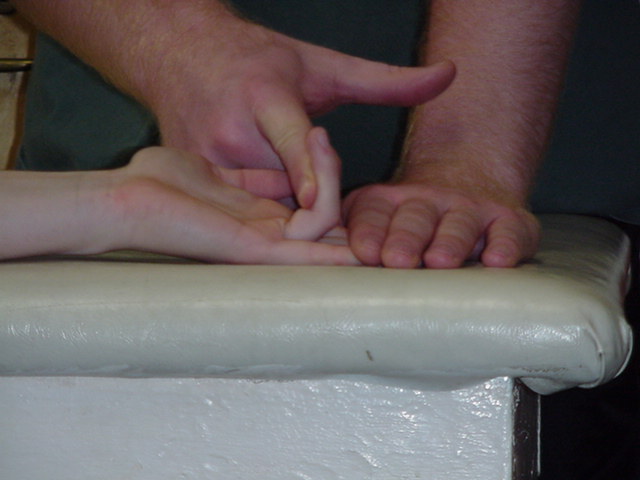 |
| PIP Extension |
The
patient's forearm is in pronation with the wrist in neutral. The finger
being tested should be in slight extension at the MCP joint. The patient's
other fingers are flexed against the table, except the test finger. The
therapist stabilizes the test finger at the proximal phalanx. The
therapist applies resistance distal to PIP joint in the direction of
flexion, while the patient extends the PIP joint. |
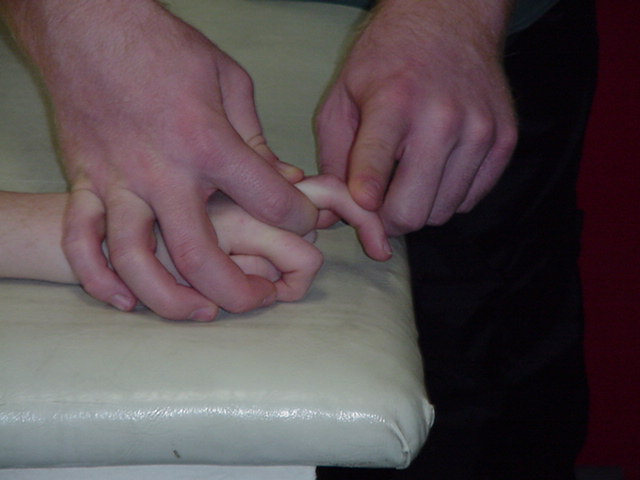 |
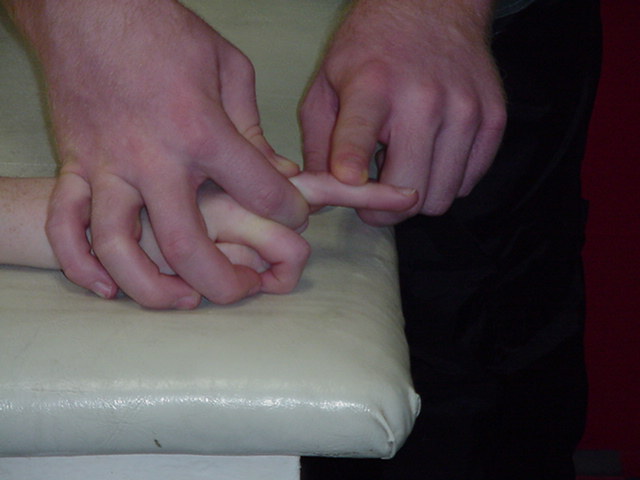 |
| DIP Flexion |
The patient's
forearm is in supination with the wrist in neutral, with the PIP joint in
extension. The therapist stabilizes the middle phalanx by grasping it on
either side, and resistance is applied at the distal phalanx in the
direction of extension while the patient actively flexes the DIP joint. |
 |
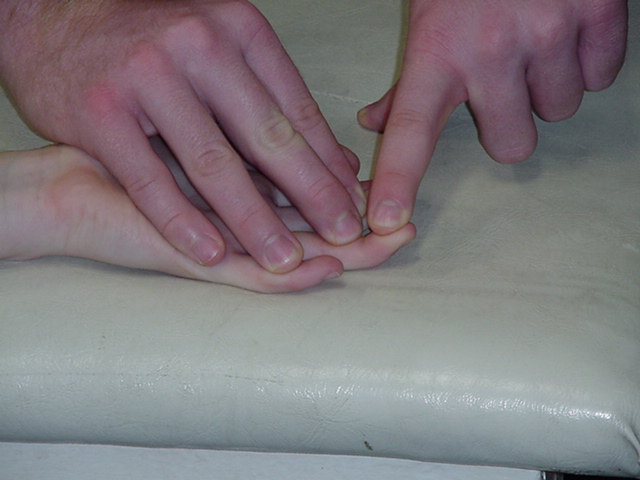 |
| DIP Extension |
The
patient's forearm is in pronation with the wrist in neutral. The finger
being tested should be in slight extension at the PIP joint. The patient's
other fingers are flexed against the table, except the test finger. The
therapist stabilizes the test finger at the middle phalanx. The therapist
applies resistance distal to DIP joint in the direction of flexion, while
the patient extends the DIP joint. |
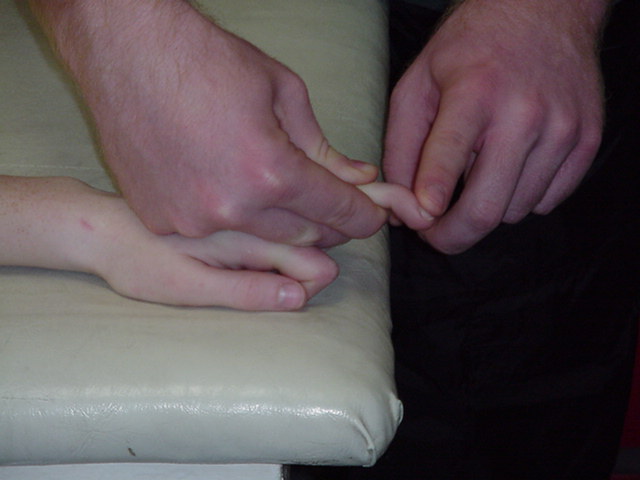 |
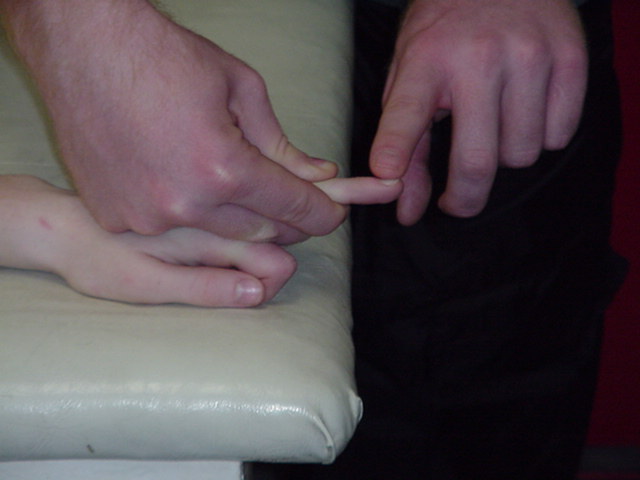 |
| Finger Abduction |
The patient's
forearm is pronated with the wrist in neutral. Fingers start in extension
and adduction. MCP joints are in neutral while avoiding hyperextension.
Therapist supports wrist in neutral. The fingers of the other hand are
used to give resistance on the distal phalanx, on the radial side of one
finger and the ulnar side of the adjacent finger. The direction of
resistance is toward adduction while patient actively abducts. |
 |
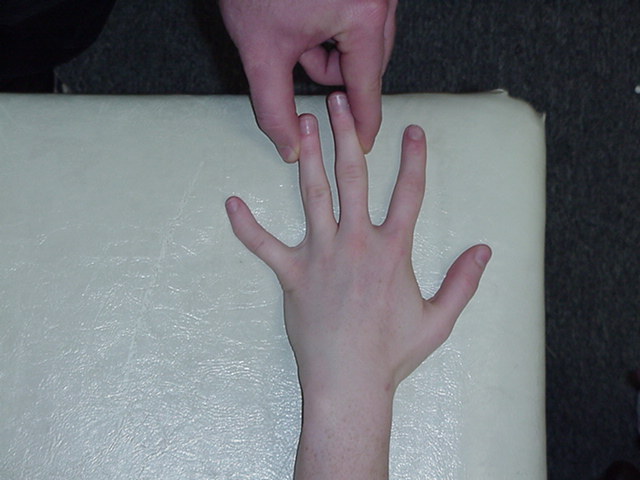 |
| Finger Adduction |
The patient's
forearm is pronated, wrist in neutral, and fingers extended and abducted.
The therapist supports the wrist in neutral. The fingers of the other hand
are used to give resistance on the distal phalanx, on the radial side of
one finger and the ulnar side of the adjacent finger. The direction of
resistance is toward abduction while the patient actively adducts. |
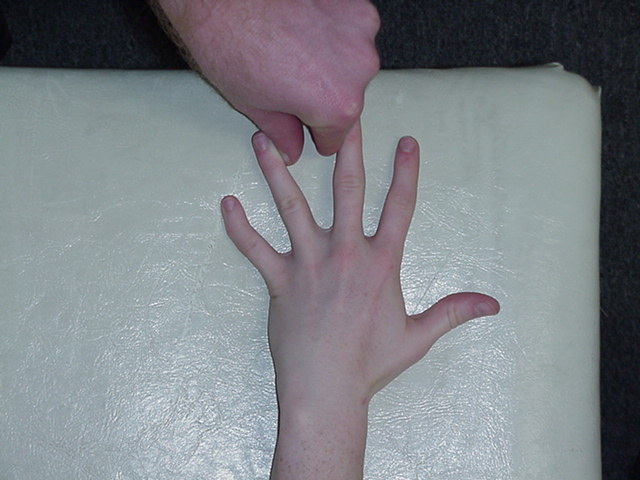 |
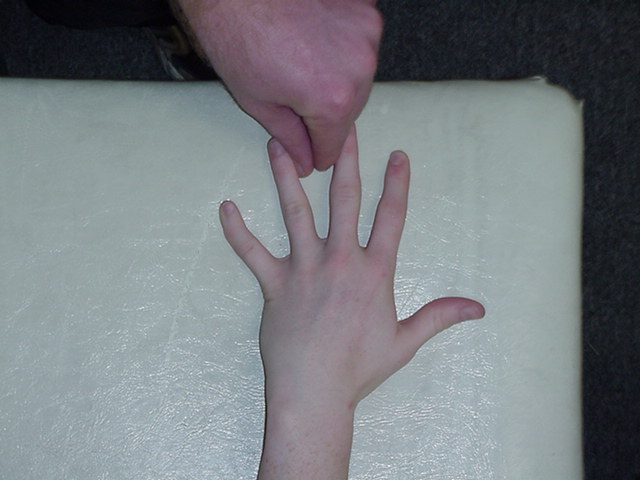 |
Hislop, Helen J. & Montgomery, Jaqueline with
contributor Barbara Connelly.















